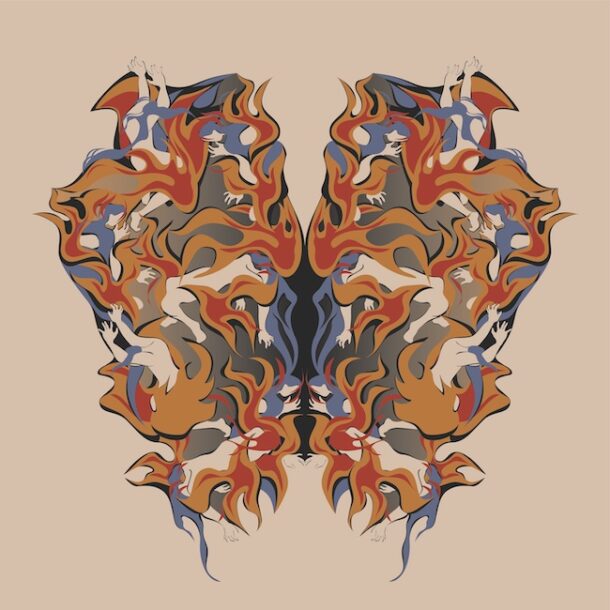
ADVOCARTSY is proud to present a collection of works by Iranian artist Parastou Forouhar. The solo exhibition, Papillon, opens on January 20th, 2024. An opening reception will take place from 5 – 8pm at ADVOCARTSY in West Hollywood – 434 N. La Cienega Blvd, Los Angeles.
Parastou Forouhar was born in Tehran in 1962 and has been living and working in Germany since 1991. “My work is a critique of a familiar culture of ornament, which leaves so little room for individualism,” Forouhar says. “In ornamental structure, an overall principle is forced on the components; what doesn’t conform must be rejected and removed. I equate this with a totalitarian system, which also removes what damages the overall order.” Forouhar’s work blurs the boundaries between form and concept, biography and artistry. Its mastery lies in seamlessly weaving the personal, steeped in profound convictions, into a shared endeavor for the audience. Through her art, we are drawn into the sphere of violence, prompted to contemplate alongside her, to share in her indignation, and to endure as she has endured. Ultimately, Forouhar’s body of work stands as a testament to her belief, not in any otherworldly or divine system, but in the compelling influence of evidence—be it visual, verbal, or emotional— to transform the social order.
In the Papillon Collection, the simultaneity of beauty and horror is masterfully encapsulated within the delicate guise of butterflies. In the graceful contours of their wing pairs, scenes of terror unfold, saturated with aggression and raw brutality: bound, subjugated, executed. Each butterfly is endowed with its own name, retrospectively embodying a historically significant event in contemporary Iranian history.
Among them is Flight PS 725, a poignant reference to the Teheran to Kyiv flight. On January 8, 2020, this flight witnessed the tragic downing of a fully occupied civilian aircraft of Ukraine Airlines shortly after takeoff, struck by two surface-to-air missiles of the Islamic Republic. In Nayzar, a tribute is paid to the residents of the small town of Mahshar in southern Iran, who, faced with soaring prices, could no longer sustain their livelihoods. In November 2019, in protest, they blocked access roads to the oil refineries and were met with the full force of the state apparatus, seeking refuge in the nearby bamboo fields. Under the relentless onslaught of rocket fire, the swamp was stained crimson with their blood.
The wings in Stained are a poignant homage to the victims of repeated acid attacks. In Zankoshi, a grim allusion is made to the official honor killings of women, a testament to the deeply misogynistic stance of the regime. The butterfly Dokhtar e Abi serves as a living memory to a devoted fan of the Esteghlal football club, who, despite the ban on women entering the stadium, defiantly donned the club’s blue colors and simply yearned to attend one game. In an act of protest against an impending prison sentence, the girl ultimately set herself ablaze, becoming an icon of the protest movement. In Haft Tappe, the butterfly evokes the uprising of workers at a sugarcane factory in southwestern Iran. Following peaceful protests due to withheld wages in 2018, several representatives of the syndicate were arrested, laying the groundwork for a burgeoning labor movement in Iran.
These butterflies, extolled in Persian mystical poetry for their devotion and willingness to sacrifice, are transformed through intricate ornamentation into astonishingly aesthetically pleasing artifacts. Embodied by these butterflies are the ancient culture of Persia, its lofty poetry, and the cherished memories of home, security, and maternal love. Notably, the butterfly – known as “Parwaneh” in Persian – bears the same name as the artist’s mother. However, in contrast to these positively charged associations, upon close examination of Forouhar’s creations, it becomes evident that they are distinguished by nothing but a tragic beauty.

